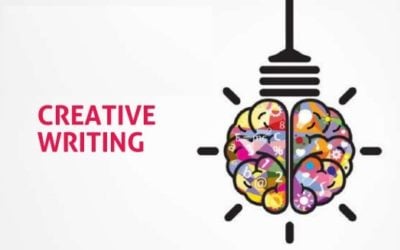If you look at almost any evidence-based guidelines for students with dyslexia, you’ll see the word ‘explicit’ in how instruction is delivered. Merriam’s Dictionary defines explicit as: “fully revealed or expressed without vagueness, implication, or ambiguity; leaving no question as to meaning or intent.” WHY IS EXPLICIT INSTRUCTION FOR DYSLEXIC STUDENTS? Remember that people with dyslexia tend to store information in explicit or declarative memory – with episodic memory areas being especially active. Activities that non-dyslexic people seem to acquire more effortlessly – like recognizing printed words, writing by hand, or retrieving math facts – are difficult if not impossible to learn without explicit instruction. For example, many non-dyslexic people may learn grammatical structure just through encountering different sentences when they are reading; dyslexic students, […]
Reading Hacks: How to Get the Most Out of Independent Reading
The more you read, the easier it is to read, but what if reading is still difficult? Is the best way to reading independently just toughing it out and persisting although you may be skipping words or reading at such a slow pace it's difficult to know what you're...
Using CHATGPT as a Study Partner and Quiz Maker [Premium]
How can ChatGPT be used as a study partner? If you’re just getting started with ChatGPT and study, begin keeping a list of prompts that can help you prepare for exams. STUDY BUDDY, SELF-TEST, and QUIZMAKER FOR TEACHERS ChatGPT is very handy as a study buddy, especially if working from a knowledgeable source. For most dyslexics, making studying interactive, visual, and interesting can go a long way to making information easier to remember. Here are some examples of prompts and ChatGPT answers: Me: Provide partially worked examples to help me learn how to use transition words in complex sentences. Certainly! Understanding how to use transition words in complex sentences can greatly enhance your writing. Here are some examples with explanations: Despite the rain, we decided […]
Don’t Do This: Dyslexia in The General Classroom [Premium]
With all the demands that teachers face regarding classroom management, and the pressures getting students up to speed in reading and math, dyslexic students may find themselves experiencing additional stress from common classroom practices. We now know that as a group, dyslexic children are more emotionally reactive than their classroom peers (UCSF research). In addition, we know that over half of dyslexic adults experience symptoms of post-traumatic stress disorder when returning to school settings as parents. In the the Dyslexia at School study from Dyslexic Advantage, 43% of parents surveyed reported that their student was punished because of dyslexia-related challenges. What were some the punishments recorded? – given extra homework – physical seclusion (work in hallway or closet) – singled out in classroom […]
Question: My 5th Grader is Refusing Structured Literacy What Should I do? [Premium]
My 5th Grader is refusing structured literacy, what should I do? The following is general and not specific advice. The best advice comes from someone who knows your student and also knows in more detail what your student has been experiencing. REFUSING STRUCTURED LITERACY It’s generally accepted that structured literacy is the remediation of choice for students who are struggling significantly with reading and individual word decoding. There are many reasons why students may struggle with and ultimately give up on structured literacy. They may be depressed and worn out or mismatched with a curriculum, teacher or tutor. Sometimes what worked for a student in the past won’t work for them now because the progress is slow, or they decode sufficiently that they prefer to […]
Getting Your Students Started in Creative Writing
With all the work of school and physical challenges getting information down on paper, many students with dyslexia don't get a chance to write creatively - but the Karina Eide Young Writers Awards might get some students off the sidelines. The deadline for the...
Dyslexic Advantage at Stow Library in MA
Last week, Brock and I gave a presentation on the Strengths of Dyslexia at the Randall Library in Stow, Massachusetts via Zoom. Tina McAndrew, director of the Randall Library, got the idea to apply for a grant from the American Libraries Association after speaking to...
Completing My Degree with AI and ChatGPT
Recently, I spoke with dyslexic entrepreneur Stan Gloss, who returned to higher education to finish a degree in Educational Leadership. Stan's full interview will be featured in an upcoming issue in our Premium magazine. What Stan shares is his workflow...
Severe Dyslexia Reading [Premium]
Q: My daughter is severely dyslexic and is having trouble making progress reading. She is homeschooled. How can I help? A: Ideally, the best person to provide specific information about your student’s dyslexia is the professional who performed a comprehensive assessment. The following information is not specific to your daughter, but more general information in the hopes some of it may be helpful to you. Many severely dyslexic children have trouble perceiving or remembering sounds, sound-letter associations, or the letters that comprise the different spellings of words. If a student has significant working memory limitations, she or he may also have to learn in little bits which may add to the time words are mastered. RE-LEARNING AGAIN AND AGAIN If the problem is that a […]
Q: What If My Professor Rejects My Accommodations Request?
A: You haven't said what accommodation you are seeking, but the Americans with Disabilities Act or ADA requires that postsecondary institutions must provide "reasonable accommodations" to participate in courses, programs, and activities. From the American...
Teaching Math with Visual Models [Premium]
One way to teach to students’ strengths is to build on nonverbal reasoning and experimential – multisensory learning strengths in math. What does that mean? It means not being in a hurry to have students work through math problems before a strong foundational understanding and technical math meanings are established, and building on math reasoning before diving into math problem-solving involving symbols and technical language. Room to Discover has an excellent post on Visual Models. With five representations of mathematical ideas, why is there so much focus on verbal and symbolic work? The creator of Room to Discover also runs workshops and publishes manipulatives and other resources to his store. The Room to Discover site focuses on graphic representations – but a related […]
Asynchronous Development [Premium]
Asynchronous development refers to an unevenness in development which may include wide differences in various aspects of cognition, physical development, and emotional development. The unevenness in these different aspects of development can create paradoxes (being ahead in some abilities as well as behind) and opportunities as well as stress. Asynchronous development was first introduced in the academic and educational literature in the context of gifted children – children who showed wide discrepancies between strengths and weaknesses and who were sometimes referred to as being “twice exceptional”. In the figure below, an example of score variations is seen in a gifted student with dyslexia. Where the standard scaled score for age is 100, this student had strengths in verbal comprehension with a score of […]

![What is ‘Explicit’ Instruction and Why Does It Help with Dyslexia? [Premium]](https://www.dyslexicadvantage.org/wp-content/uploads/2024/02/What-is-Explicit-Instruction-and-Why-Does-It-Help-with-Dyslexia-b-400x250.jpg)

![Using CHATGPT as a Study Partner and Quiz Maker [Premium]](https://www.dyslexicadvantage.org/wp-content/uploads/2024/02/chat-gpt-dyslexia-400x250.png)
![Don’t Do This: Dyslexia in The General Classroom [Premium]](https://www.dyslexicadvantage.org/wp-content/uploads/2024/02/Dont-Do-This-Dyslexia-in-The-General-Classroom-Premium-a-1-400x250.jpg)
![Question: My 5th Grader is Refusing Structured Literacy What Should I do? [Premium]](https://www.dyslexicadvantage.org/wp-content/uploads/2024/02/5th-Grader-Refusing-Structured-Literacy-400x250.jpg)



![Severe Dyslexia Reading [Premium]](https://www.dyslexicadvantage.org/wp-content/uploads/2023/12/Severe-Dyslexia-Reading-2-400x250.jpg)

![Teaching Math with Visual Models [Premium]](https://www.dyslexicadvantage.org/wp-content/uploads/2023/12/Teaching-Math-with-Visual-Models-400x250.jpg)
![Asynchronous Development [Premium]](https://www.dyslexicadvantage.org/wp-content/uploads/2023/12/bell-curve-400x250.png)













